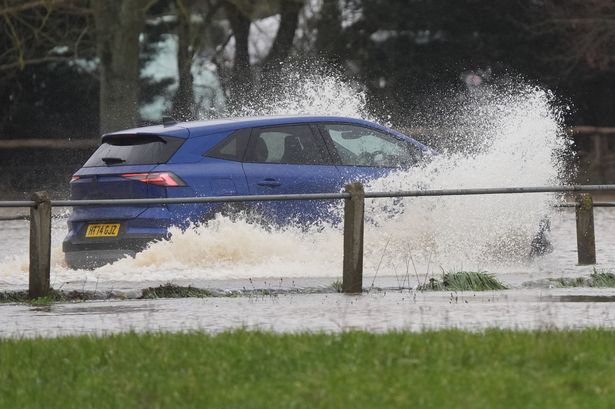The Environment Agency has issued a stark warning to residents across Britain, urging immediate action in the face of escalating flood risks. Over 160 flood warnings have been declared, signifying a significant threat of flooding to homes and businesses. This widespread alert underscores the seriousness of the situation and calls for proactive measures to mitigate potential damage and ensure public safety. The agency’s urgent appeal emphasizes the need for residents in affected areas to stay informed about the evolving situation, prepare their properties for potential inundation, and heed any evacuation orders issued by local authorities. This proactive approach can significantly reduce the impact of flooding and safeguard lives and livelihoods.
The latest flood warnings come on the heels of persistent heavy rainfall across various regions of the UK. Saturated ground conditions, coupled with overflowing rivers and swollen waterways, have created a perfect storm for widespread flooding. The severity of the situation is further compounded by forecasts predicting further precipitation in the coming days, which could exacerbate the existing flood risks and expand the affected areas. This unfolding scenario paints a concerning picture and highlights the vulnerability of communities to extreme weather events, emphasizing the critical need for preparedness and resilience.
The Environment Agency’s flood warning system operates on a three-tiered scale: flood alerts, flood warnings, and severe flood warnings. Flood alerts represent the lowest level of risk, indicating the possibility of flooding in specific areas. Flood warnings signify a higher probability of flooding and urge residents to take immediate action to protect their properties. Severe flood warnings denote the highest level of risk, indicating imminent danger to life and property. Understanding these distinctions is crucial for residents to assess the level of threat and respond accordingly. The agency’s detailed flood map provides real-time information on affected areas, enabling residents to monitor the situation closely and make informed decisions.
Preparing for a potential flood involves several key steps that can significantly minimize damage and disruption. These include moving valuable possessions and important documents to higher ground, laying down sandbags to create barriers against rising water levels, and ensuring access to essential supplies like food, water, and medication. Having a communication plan in place is also vital to ensure family members can stay connected and informed. Furthermore, knowing evacuation routes and assembly points designated by local authorities is essential in case evacuation becomes necessary. Being prepared can significantly reduce the stress and anxiety associated with flood events.
Beyond immediate preparations, long-term measures can enhance community resilience to flooding. These encompass improved drainage systems, flood defenses, and sustainable land management practices. Investing in these infrastructure improvements can significantly reduce the vulnerability of communities to future flood events. Furthermore, raising public awareness about flood risks and promoting individual preparedness can empower communities to respond effectively to such emergencies. A collective effort involving government agencies, local communities, and individuals is essential to mitigate the impact of flooding and build more resilient communities.
The current flood crisis underscores the increasing frequency and intensity of extreme weather events, a trend attributed to climate change. The rising global temperatures are disrupting weather patterns, leading to more intense rainfall and increased flood risks. Addressing climate change is therefore crucial to mitigating the long-term impacts of flooding and building a more sustainable future. This requires a global commitment to reducing greenhouse gas emissions, transitioning to renewable energy sources, and implementing sustainable land management practices. By taking proactive steps today, we can safeguard our communities from the escalating threats of climate change and create a more resilient and secure future for generations to come. The current flood situation serves as a stark reminder of the urgency and importance of addressing climate change and investing in sustainable solutions.














